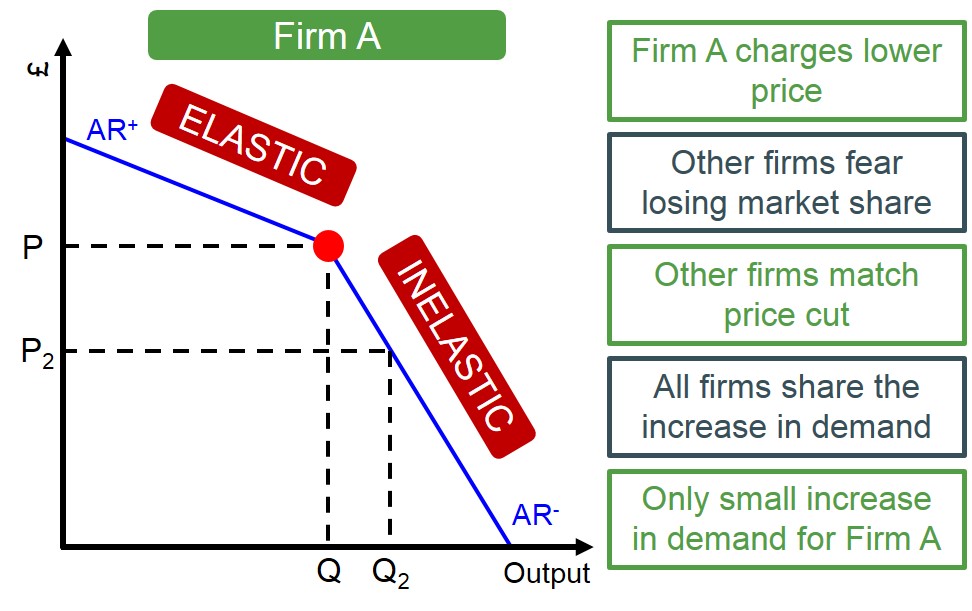Is a model based on the theory of game theory, by graphically illustrating the high level of interdependence that exists in an oligopoly market. The idea is the demand curve has a kink to represent that a firm faces two different sections of their demand curve - which differs from the conventional downward-sloping demand curve. They face an elastic demand curve above the market price and an inelastic demand curve below the market price.
Below is an illustration of the kinked demand curve facing markets that have a high degree of interdependency, with the demand curve being elastic above the prevailing market price and inelastic below the prevailing market price. This is all caused because of rival firm reactions.
